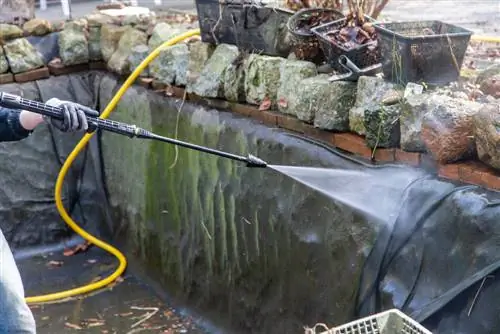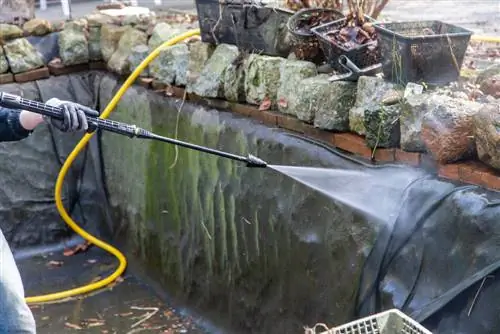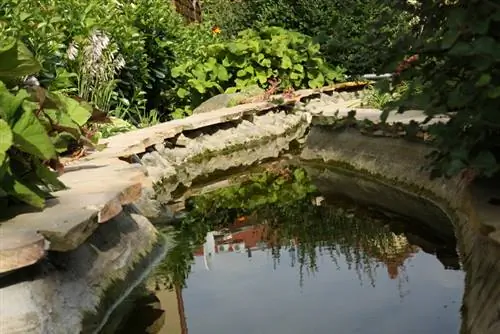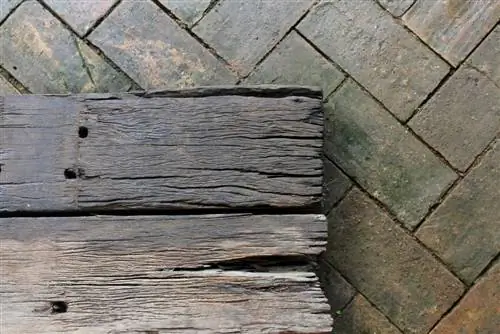- Author admin [email protected].
- Public 2023-12-16 16:46.
- Last modified 2025-01-23 11:22.
When a lot of organic material sinks to the bottom of the pond, siltation occurs. In order to avoid undesirable processes of putrefaction and to preserve the water, the material must be vacuumed off. But for many hobby gardeners the question arises as to where.

How can I dispose of pond sludge?
Pond sludge can be disposed of in various ways: in small quantities in residual or organic waste bins, as a free drop-off at the composting plant or by commissioning a recycling company. The environmentally friendly way is to use it as fertilizer in your own garden.
Disposal options
Depending on the region, you have different options for disposing of large amounts of pond sludge. In some cities it is possible to flush the material into the sewer system with water. Anyone who acts on their own initiative without prior information risks high fines. Check with your local waste authority for options.
Safe ways of disposal:
- Residual waste bin or organic waste for small quantities
- free delivery to the composting plant
- Hiring a recycling company
When it comes to renovating a pond, a few cubic meters of mud can be produced. Special disposal companies not only take care of the removal of the material but also take care of the vacuuming. The costs incurred depend on the amount of substrate, the amount of work and the transport routes.
Tip
To prevent siltation, we recommend using so-called pond sludge removers. However, these are of little help if the water is already heavily silted up.
Information for pond owners
Farmers with bodies of water on their land, pond owners and anglers and fishing associations can make their pond sludge available for nature conservation measures, provided it is free of substances that are harmful to the environment or he alth. The responsible water authority will carry out an assessment of this option. If the soil material does not fall into the category of uncontaminated substrates, it must be treated as waste.
Fertilize with pond sludge
Microorganisms have decomposed plant parts, leaves and food residues on the pond bottom and made the nutrients available to plants. The extracted sludge is therefore ideal as a fertilizer for useful and ornamental plants. If you use a mud vacuum, you can direct the substrate into the beds through a wastewater hose. If large quantities are produced, you should dry them before further use.
Drying the substrate
Place four squared timbers into a square, which you line with garden fleece. This device serves as a collecting basin in which the water seeps away and the sludge particles remain behind. You can then spread the concentrated pond sludge around the garden with a bucket or shovel.






